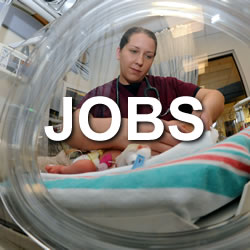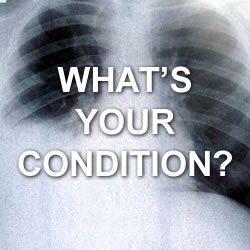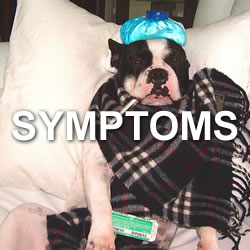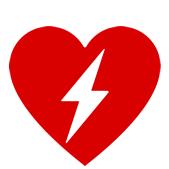Sudden Cardiac Arrest: Cool the Body, Save the Brain
The HWN Team | Cutting Edge

image by: RODNAE Productions
Evidence suggests that the number of people resuscitated from Sudden Cardiac Arrest may double simply with the use of hypothermia. Yet, most EMS systems & hospitals still have not embraced it. Why?
Sudden Cardiac Arrest (SCA) as opposed to 'heart attack' remains as deadly as it was 40 years ago despite progress in both technology and systems of emergency care. Only 2% of all sudden cardiac arrest victims will eventually walk out of the hospital with their prior brain function. Even in the face of the ubiquitous CPR and the proliferation of automatic external defibrillators (AEDs).
This is in stark contrast to the major strides that have been made in the same period of time for 'heart attack'. Each year, more people die from SCA than from breast cancer, lung cancer, stroke, or AIDS combined. SCA mortality is high. 95% of SCA cases are fatal.
And two-thirds of SCA events occur in people without any previous indications of heart disease.1 The prevalence of out-of-hospital SCA in the U.S., Canada, Europe and other industrialized countries is between 35.7 and 128.3 cases per 100,000. That's approximately 300,000 people each year just in the U.S. alone.2
Sudden Cardiac Arrest occurs very suddenly for a variety of reasons. According to the American Heart Association "SCA is the sudden, abrupt loss of heart function…SCA occurs when electrical impulses in the heart become rapid or chaotic, which causes the heart to suddenly stop beating. When the heart stops beating, blood and oxygen supplies are cut off which eventually results in tissue and organ damage and ultimately death".3
The most critical organ affected by cardiac arrest is the brain. Cutting off oxygen supply to the brain can and usually leads to irreversible brain damage, coma and brain death, even in cases where blood circulation has been restored. Evidence now suggests that reperfusion of the brain after cardiac arrest can create even more damage than the lack of perfusion which occurs during cardiac arrest.
How bad is it?
Overall, probably only about 2% of all sudden cardiac arrest victims will eventually walk out of the hospital with their pre cardiac arrest brain function. Most sources quote different numbers for SCA survivors with some as low as 1% and some as high as 8.5%. However, they all seem to agree that less than 10% will survive. And, if you happen to be one of the lucky ones that are resuscitated, the odds are you will probably arrive at the hospital unconscious, and if you still survive, the chances are you will probably end up with significant brain damage. Pretty dismal indeed.4-8
However there is a glimmer of hope.
Since 2002, evidence suggests that the number of people resuscitated from SCA without significant brain damage may double from 2% to 4%, simply by cooling patients that remain in an altered mental state or unconscious. A potentially mind blowing 100% increase. The sad thing is, even with this simple technique, most patients are still not receiving this potentially brain saving procedure.
And, it's nothing new! Apparently, the use of hypothermia therapy goes a long way back in history and can be traced even back to the original healer Hippocrates in ancient Greece who packed wounded soldiers in ice and snow while awaiting medical attention. In modern times, use of moderate hypothermia in heart patients was reported back in the 1950s but was abandoned because of lack of supporting data on its benefits as well as difficulties in implementation.9
In the last 15 years, many studies have reported the benefits of induced hypothermia. Several studies reported improved clinical outcomes following hypothermia of patients who were cardiac arrest patients in coma or those who suffered from ischemic stroke.10 The American Heart Association (AHA) and Advanced Life Support Task Force of the International Liaison Committee on Resuscitation (ILCOR) recommended the use of the procedure in 2003. It was later incorporated in the 2005 Guidelines for Cardiopulmonary Resuscitation and Emergency Cardiovascular Care.11
Yet, in clinical practice, this procedure which can help prevent permanent disability, is seldom used in hospitals and clinics.
No reliable data is available to determine how many U.S. or Canadian hospitals are equipped to perform therapeutic hypothermia. A rough estimate is only about 25%, if that. In 2005, 75% of doctors surveyed had never used the procedure. Surprisingly, utilization of hypothermia therapy is inconsistent and misunderstood. Recently, the University of Pennsylvania launched the Penn Alliance for Therapeutic Hypothermia (PATH), the first national U.S. clinical registry focused on therapeutic hypothermia after cardiac arrest. Hopefully, the database will improve data reporting and collection.12,13
So, what's this cooling all about?
Therapeutic hypothermia is a medical procedure wherein the body temperature is artificially lowered from 37°C down to between 28° and 32°C or around 930F. It is performed in patients whose pulse and circulation has been restored by CPR and/or defibrillator, but remain unconscious or in an altered mental state, despite a stable cardiac rhythm. Cooling is initiated as soon as possible after restoration of the heart beat and is kept constant for up to 24 hours. After this time period the patient is then gradually warmed up to normal temperature.14-18
Cooling the body to save the brain is similar to hibernation in animals during wintertime. Physiological processes, including damage to tissues and organs are slowed down by the lower temperature including:
- Reducing cerebral metabolism (approximately 6-8% per 1ºC)
- Reducing excitatory amino acids (glutamate release)
- Attenuation and/or reversibility of ischemic depolarization of the CNS (central nervous system), leading to membrane stabilization, electrolyte redistribution, and normalization of intracellular water concentration and intracellular pH (stabilization of the blood-brain barrier)
- Attenuation of oxygen free radical production and lipid peroxidation
- Restoration of normal intracellular signalling mechanisms (including calcium modulation) and inhibition of deleterious signalling mechanisms, such as apoptotic signalling
- Restoration of protein synthesis and gene expression
- Inhibition of deleterious inflammatory products (ie, cytokines, interleukins and arachidonic acid cascade end products)
- Attenuation of CSF (cerebral spinal fluid) platelet-activating factor (PAF)
- Inhibition of cytoskeletal breakdown
- Decrease in the area of injury, promotion of epicardial reflow, decrease in myocardial metabolic demand, and preservation of intracellular high-energy phosphate stores
Therapeutic hypothermia can be induced either externally or internally:
External / Surface cooling - This is done by applying cooling elements onto the body surface including:
- placing ice bags under the armpits and the groin of the patient
- cooling blankets and mattresses
- cold water recirculation
- a cooling helmet
Several heat exchange devices used for surfacing cooling are commercially available, such as: cooling with a water circulating external cooling blankets (Blanketrol II, Cincinatti Subzero, The Surgical Company, Amersfoort, The Netherlands); air circulating external cooling blankets (Caircooler CC1000, Medeco, Oud-Beijerland, The Netherlands) and water circulating external cooling devices using self-adhesive gel-coated pads (Arctic Sun, Medivance, Jugenheim, Germany)
Internal / Endovascular cooling - Essentially this entails intravenous infusion of cool fluid. Different solutions are available. An example of an intravascular heat exchange system is the Icy-catheter (Alsius Coolguard 3000, Medicor, Nieuwegein, The Netherlands). This system "uses a single lumen (8.5 Fr, 38 cm) central venous catheter inserted into the inferior vena cava via the left or right femoral vein. Normal saline is pumped through three balloons mounted on the catheter and returned to a central system in a closed loop. The saline flow within the balloons is in close contact with the patient's blood flow and serves as a heat exchange system. An automatic temperature control device adjusts the temperature of the circulating saline (range 4°C to 42°C) based on the patient's rectal temperature."
A study comparing surface vs. endovascular cooling plus the use of the ICY-Coolguard inserted into the femoral vein found that surface cooling was associated with a higher risk for overcooling and the reversely, faster rewarming. Endovascular cooling enabled better temperature control. However, no significant difference in hospital mortality was observed. Surface cooling techniques, however, are suitable in "field cooling" before the patient reaches the hospital.
Another study compared several cooling methods and found that temperature decline was significantly higher with the water-circulating blankets, gel pads and intravascular cooling compared to conventional cooling (e.g. ice packs) and air-circulating blankets. In addition, intravascular cooling was found to be the most precise and most reliable.
So, who is eligible for hypothermia?
- Unconscious adult patients with return of spontaneous circulation after out-of-hospital cardiac arrest... when initial rhythm was ventricular fibrillation (VF)
- patients with non-VF arrest out-of-hospital or with in-hospital arrest
- patients with hemorrhagic shock and patients with other forms of severe brain injury
- patients in coma due to cardiac arrest
- patients who suffered from acute stroke
Mind you, therapeutic hypothermia is not for everyone.
- Coma from other causes
- Patients who recently underwent major surgery
- Patients with infection
- Patients with severe brain trauma
- Patients with a "do not resuscitate" (DNR) order
- Pediatric patients, research is still ongoing. In 2010, the National Heart, Lung, and Blood Institute (NHLBI) started the Therapeutic Hypothermia after Pediatric Cardiac Arrest (THAPCA) trials "to investigate the effectiveness of body cooling treatment in infants and children who have had cardiac arrest".19
So, why aren't more hospitals using it?
Too expensive - There is resistance especially among small hospitals which cannot afford highly sophisticated expensive cooling devices, although they are more precise and easier to use. However, the good news is that hypothermia therapy does not need to be sophisticated. It can be simply induced by cooling blankets or application of ice packs.
Researchers University of Pennsylvania School of Medicine in Philadelphia conducted a cost-efficiency analysis in 2009 and found the procedure to be "very cost-effective... with good value for the money." The researchers reported improvements in quality of life as well as decrease in overall health care costs among hypothermia patients. According to study leader Dr Raina M Merchant: "The cost of therapeutic hypothermia compares favorably with other medical treatments that are commonly used, such as kidney dialysis, estimated at $55 000 per quality-adjusted life-year, and public access defibrillation, at $44 000 per quality-adjusted life-year".20,21
Too difficult - Others argue that the procedure is too complicated that it requires medical professionals with special training to perform it. Many hospitals lack trained staff especially during emergency situations. Many cite the decision-making (who is eligible and who is not, see below) and initiation process to be difficult. However, the European Resuscitation Council (ERC) declares that is "safe and effective even if there is lack of experience". In fact, hypothermia therapy has been shown to be feasible in small community hospitals and even outside the hospital emergency room environment. The staff need not be medical doctors but may be done by paramedics and critical care nurses.22
Complications - Like all therapies, hypothermia treatment can have complications including pneumonia, bleeding and blood clotting problems, arrhythmias (e.g. bradycardia or abnormally slow heart beat) and infection. These complications are due to extreme fluctuations in temperature as well as overcooling (temperature lower than 32°C). As opposed to internal cooling methods, surface cooling was found to be associated with more complications especially overcooling, symptomatic bradycardia and rebound hyperthermia.23
But, there is hope! Here's some success stories:
Case # 1: A critical care nurse reported about her involvement in developing a hypothermia therapy protocol in a hospital providing care to rural communities in Nevada. She described a case of a 56-year old diabetic who had cardiac arrest while at work. Hypothermia (33.2°C) was achieved 6 hours after delivery to the hospital. The comatose patients woke up, underwent speech therapy and eventually recovered with "no neurological deficits."
Case # 2: A well-publicized success story was that of 56-year old physician Dr. Syed Hasan Naqvi who sustained sudden cardiac arrest while on the treadmill. He was taken to a hospital, declared comatose and placed on a ventilator. He was then transferred to another hospital equipped with cooling therapy treatment five hours after his collapse. He was packed with ice during the one hour trip. Upon arrival, his brain function was almost gone but therapeutic hypothermia was still instituted. The patient woke up five days later. He still suffers from physical weakness but has regained full mental function.
And EMS systems are adopting hypothermia even while hospitals aren't. New York City is one of the first cities in the U.S. to promote the use of hypothermia therapy. The New York Times reported in 2008 that New York paramedics were instructed to transport cardiac arrest patients only to hospitals with therapeutic hypothermia systems even if they have to bypass smaller emergency rooms and increase travel time.. A year later, its ambulances were equipped with cold IV saline so the cooling process can start even during transport.24
The Bottom Line
At this point, SCA remains a major and deadly health concern even in the setting of bystander CPR and AEDs.Advocacy groups including the American Heart Association and the Sudden Cardiac Arrest Coalition composed of at least 30 health organizations are actively involved in bringing this issue to the forefront. And there are even those who advocate the routine placement of AEDs in the homes of patients who are at high risk for SCA.25
Hypothermia may never alter the overall mortality from SCA but if one survives a cardiac arrest and cooling is instituted, the chance that you could walk out of the hospital without significant brain damage may be doubled!
So, come on hospitals, get your act together. Hippocrates had it right over 2000 years ago – Cool the Body, Save the Brain.
Published April 3, 2011, updated July 26, 2012
References
- Sudden Cardiac Arrest, General Talking Points, Sudden Cardiac Arrest Coalition
- Adler J, Therapeutic Hypothermia, Medscape, November 22, 2011
- Heart Attack or Sudden Cardiac Arrest: How Are They Different? American Heart Association, May 25, 2012
- Eisenberg MS et al, Cardiac Arrest and Resuscitation: A Tale of 29 cities, Ann Emerg Med. 1990 Feb;19(2):179-86
- Bernard SA et al, Treatment of Comatose Survivors of Out-of-Hospital Cardiac Arrest with Induced Hypothermia, N Engl J Med 2002; 346:557-563
- Therapeutic Hypothermia Preserves Heart and Brain Function, Sudden Cardiac Arrest Foundation, July 9, 2012
- Sudden Cardiac Arrest Facts, Sudden Cardiac Arrest Association, March 2009
- Arawwawala B et al, Clinical review: Beyond immediate survival from resuscitation – long-term outcome considerations after cardiac arrest, Critical Care 2007, 11:235
- Nolan JP et al, Therapeutic Hypothermia After Cardiac Arrest, ILCOR Advisory Statement, Circulation. 2003;108:118
- Kammersgaard LP et al, Admission Body Temperature Predicts Long-Term Mortality After Acute Stroke, American Heart Association. March 12, 2002, pg. 1759-1762
- 2005 American Heart Association Guidelines for Cardiopulmonary Resuscitation and Emergency Cardiovascular Care, Circulation. 2005;112:IV-1-IV-5
- Joelving F, Gaining on death, cooling therapy catches on slowly, Reuters 26 Aug 2010
- Penn Alliance for Therapeutic Hypothermia (PATH), Center for Resuscitation Science, Perelman School of Medicine, University of Pennsylvania
- Gillies P et el, Therapeutic hypothermia after cardiac arrest: A retrospective comparison of surface and endovascular cooling techniques, Resuscitation, Volume 81, Issue 9, September 2010, Pages 1117-1122
- Arpino PA et al, Practical Pharmacologic Aspects of Therapeutic Hypothermia After Cardiac Arrest Pharmacotherapy, Pharmacotherapy. 2008 Jan;28(1):102-11.
- Schwab S et al, Moderate Hypothermia in the Treatment of Patients With Severe Middle Cerebral Artery Infarction, Stroke 1998;29:2461-2466
- Hoedemaekers CW et al, Comparison of cooling methods to induce and maintain normo- and hypothermia in intensive care unit patients: a prospective intervention study, Critical Care 2007, 11:R91
- Kim F et al, The Use of Pre-Hospital Mild Hypothermia after Resuscitation from Out-of-Hospital Cardiac Arrest, J Neurotrauma. 2009 March; 26(3): 359–363
- Body Cooling Treatment Study For Pediatric Cardiac Arrest Launched By NHLBI, Medical News Today, 22 October 2010
- Merchant RM et al, Cost-Effectiveness of Therapeutic Hypothermia After Cardiac Arrest, Circ Cardiovasc Qual Outcomes. 2009 Sep;2(5):421-8. Epub 2009 Aug 4.
- Lowry F, Therapeutic hypothermia for cardiac arrest is cost-effective, The Heart.org, 4 Aug 2009
- Kozik TM, Induced Hypothermia for Patients With Cardiac Arrest: Role of a Clinical Nurse Specialist, Critical Care Nurse. 2007;27: 36-42
- Hayden P et al, A comparison of complications during therapeutic hypothermia between surface cooling and endovascular cooling techniques, Critical Care 2007, 11(Suppl 2):P333
- Hartocollis A, City Pushes Cooling Therapy for Cardiac Arrest, NY Times, 3 December 2008
- Jones J, Automatic External Defibrillators (AEDs) - The Truth and the Fiction, HealthWorldNet,12 Dec 2008

Introducing Stitches!
Your Path to Meaningful Connections in the World of Health and Medicine
Connect, Collaborate, and Engage!
Coming Soon - Stitches, the innovative chat app from the creators of HWN. Join meaningful conversations on health and medical topics. Share text, images, and videos seamlessly. Connect directly within HWN's topic pages and articles.
















